Watercolor pencils are often seen as a way to practice watercolor. I beg to differ. They are an altogether different medium with their own unique advantages. In this tutorial, I show you how to use watercolor pencils. If you do the exercises, you will get a hands-on experience of what this tool can do for you.
Table of contents
In most tutorials on my blog, I combine ordinary colored pencils with watercolor. By drawing with colored pencils on top of dry watercolor, you can get stunning effects. That effect is different from what watercolor pencils can do.
A member of the One Tree Art Club Facebook group asked me about watercolor pencils. Intrigued, I decided to give them a try and purchased a set. I wanted a wide range of colors and went for an Arteza set with 120 colors (disclosure: I earn a small commission if you purchase through this link).
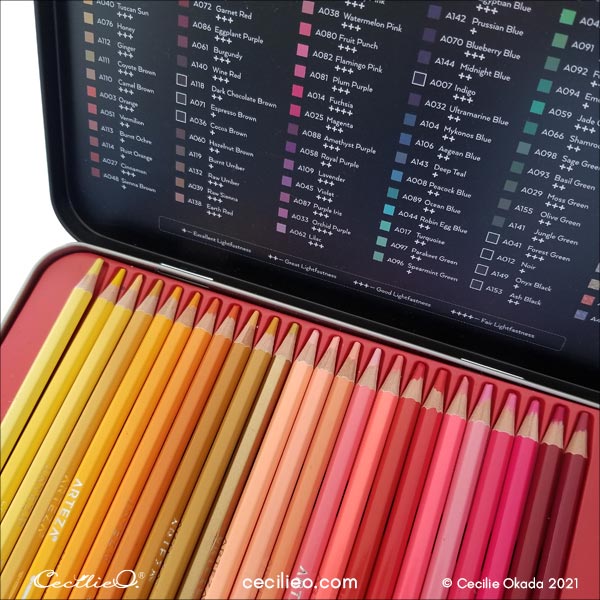
There are many excellent brands of watercolor colored pencils to choose from.
The difference: Watercolor, watercolor pencils, and ordinary colored pencils.
Watercolor and ordinary colored pencils
Watercolor is not easy to control. But in return for the lack of control, you can get beautiful, unexpected color flows. Using these beautiful shades as a foundation, I usually draw with colored pencils on top. That is how I make my paintings come to life. Masters of watercolor can paint amazing pictures. But you can forget about advanced know-how with this simple technique. It is an easy way to create beautiful art. My blog has many watercolor tutorials.
Watercolor pencils
Watercolor pencils are not about delightful swirls of color. It is about control. When you draw with these, you apply only a small amount of water to “activate” it. The water transforms the color into a brighter, smooth shade, and the color stays in place. Dawing with colored pencils is less demanding than painting. For this reason, many people find it an easy way to apply watercolor.
Testing watercolor pencils
My set has many kinds of blue color. In the image below, you can see what the colors look like when used as colored pencils. Pencil pressure creates dark to light tones.

Below, I have activated the colors with water. You will notice that some of the blue colors still have clear pencil marks, while some are almost diluted. Each color is made from different pigments that affect how well the color dilutes.
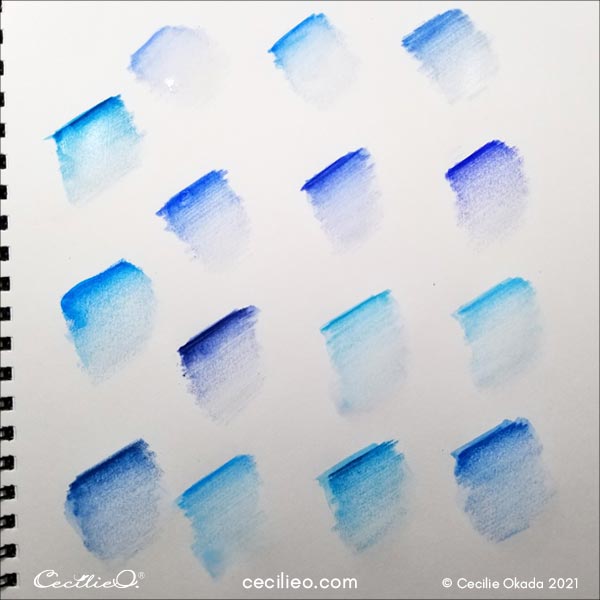
It is the binding that makes the pencils water-soluble. In ordinary color pencils, the pigments are held together by an oil-based binder.
Try the same exercise with your watercolor pencils. This way, you will get a feel for how each color reacts with water.
How to take advantage of watercolor pencils
Use the fact that some pencil marks remain with watercolor pencils. The pink lily tutorial further down is an exercise to highlight this quality.
Watercolor pencils are excellent for coloring projects. You can get beautiful, smooth shading.
They work brilliantly for small patches of color. Why? Imagine drawing a large patch of sky. It will be hard to keep the lines looking good. It is not a viable option.
Another great use of watercolor pencils is sketching. Regular sketching is essential for any aspiring artist. Instead of contending with unruly watercolors, you can experiment with these pencils. Draw small sketches to practice with composition and colors.
They can also be useful for small details in a watercolor painting.
Look how the purple colors work well on the small areas of the flower below. Here, I’ am painting on copy paper. You too can print out this flower; download the outline for free in One Tree Art Club (members: check your newsletter for access).
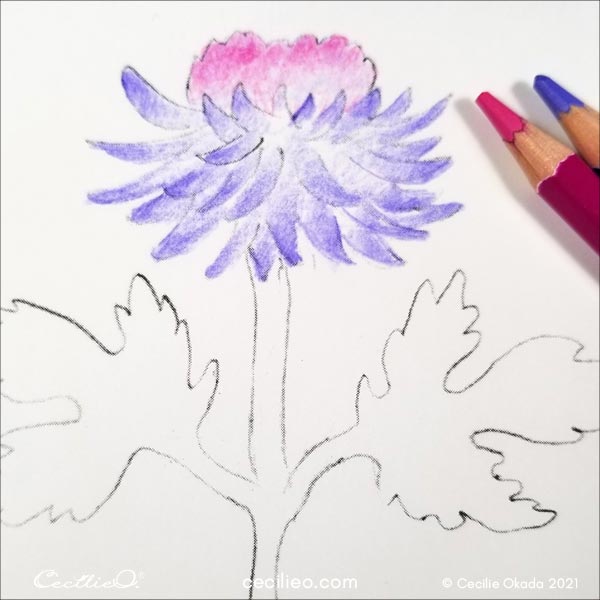
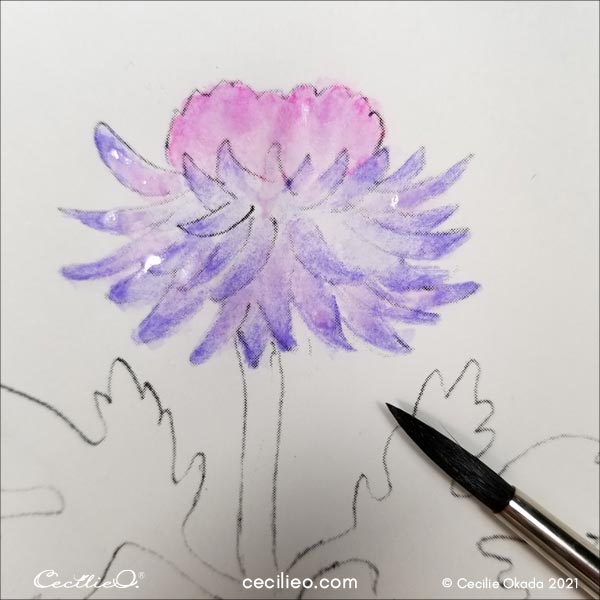
How to use watercolor pencils for a flower drawing
In the tutorial below we use watercolor pencils for delicate flower petals. The reference is a close-up photo of the heart of a beautiful lily that was gifted to me.
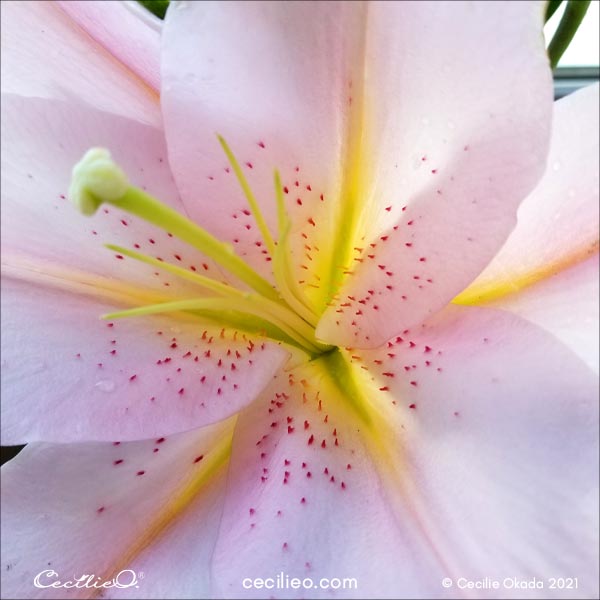
After testing a few colors, I selected six.

I outlined the basic shape on smooth, hot-pressed watercolor paper. Smooth paper is always best when you are using colored pencils.
There was a concern that the smudge from my soft pencil would interfere with the colored pencils. Rubbing out as much as possible, I still regretted not having outlined with a harder pencil.

You can download the outline in One Tree Art Club (members: check your newsletter for access). When you trace and transfer, pencil smudge will be less. Still, use an eraser to clean the surface.
Drawing the petals
The petals have subtle veins running in distinct directions. Copy those when drawing. This way, you can take advantage of the lines left underneath when activating with water. The grey color is for mimicking some of the shade on the petals.
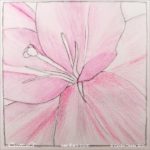
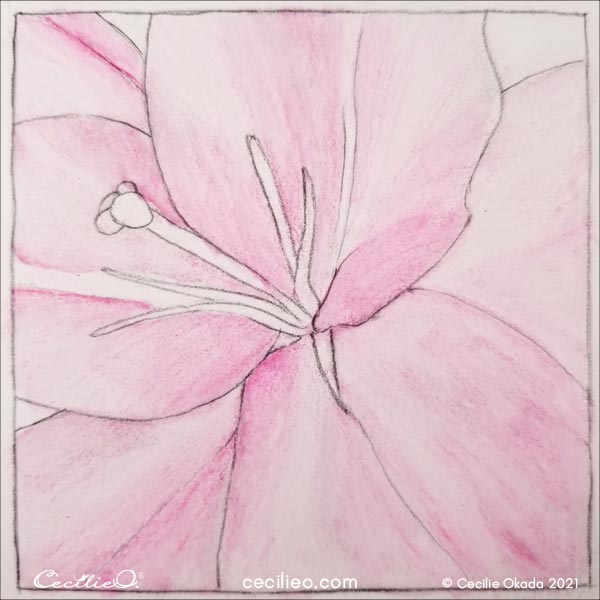
So far, so good. The petals are looking good with water.

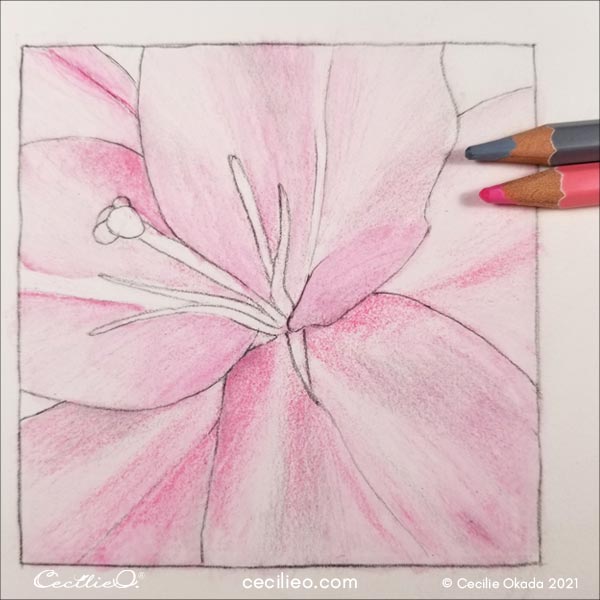
When the water has dried up, draw over again to make the shaded areas darker. You can always use a hairdryer for such a small amount of water. Pigments are not going to flow in all directions, as they may with watercolor.
For highlights, I used a sponge to soak up pigments.
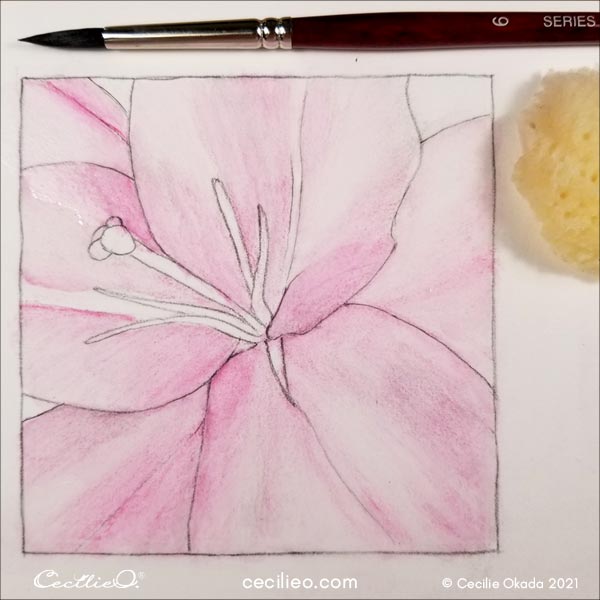
Next, I colored the stamen.

The green colors have been activated with water and are now dry. Lastly, draw with a yellow pencil and activate.
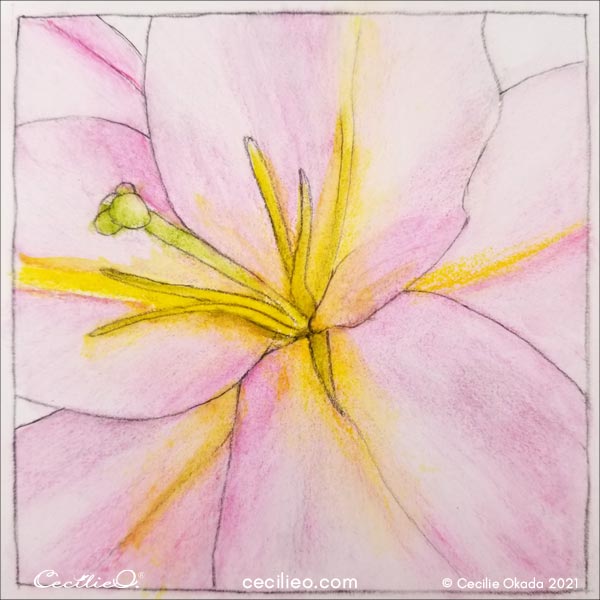
As the last step, I decided to add some punch. It looks too delicate, too light.

And finally, the red spots. Use an ordinary colored pencil for this step. If water is applied again, the spots will stay in place.
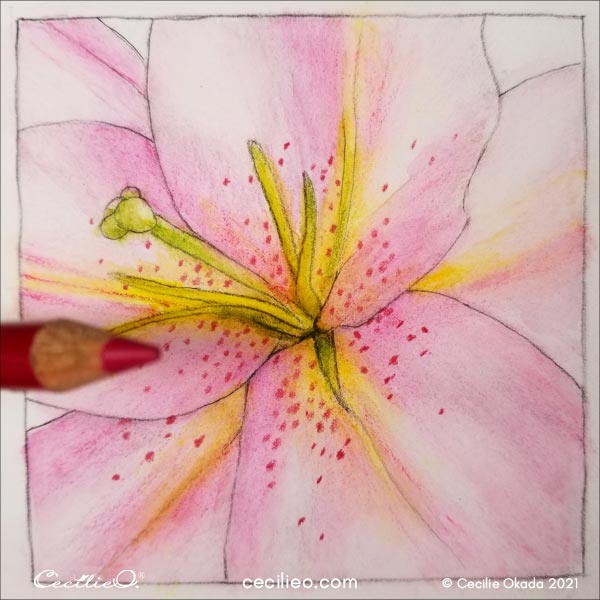
One more test. What will happen when using a darker pencil from the start? Drawing with more pressure on the darker areas, one layer is sufficient. For the highlights, use a sponge or tissue paper.
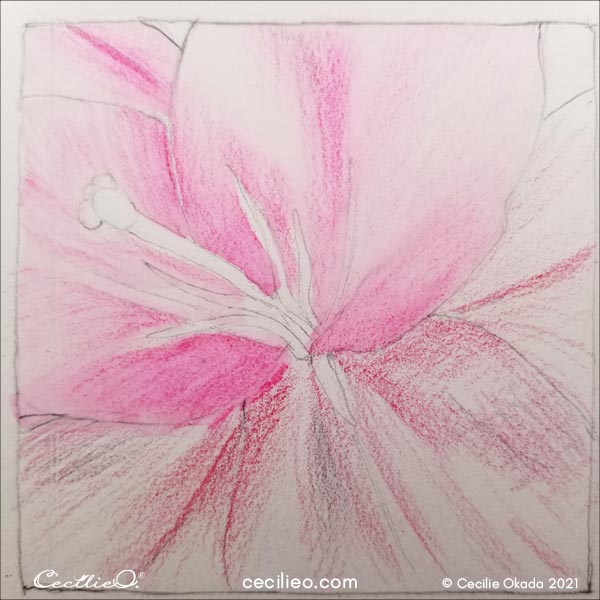

I encourage you to experiment with watercolor pencils. But remember that the merits of this medium are different than watercolor. If you keep this in mind, you will not be disappointed. Have fun!
Some watercolor tutorials:

